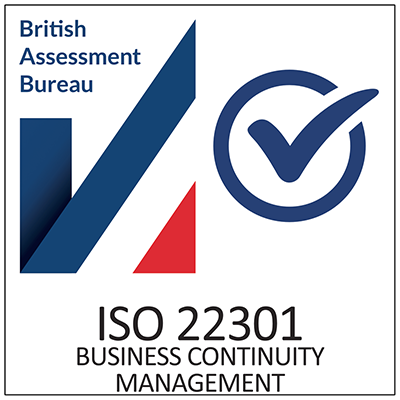In August in 2023 over 738,000 overseas tourists stayed in Dublin for at least one night. The Emerald Isle's capital city is the largest in Ireland and the country’s economic centre. A popular destination amongst tourists and business travellers, Dublin generates more than half of the nation’s GDP in the tourism and travel sector. Fuelled by a thriving tech sector, the city attracts business travellers, whether on short trips or for long-term relocations. Read on to discover our ultimate business travel guide for your trip to Dublin.

Dublin is home to Ireland’s oldest pub, The Brazen Head was established in 1198
Relocating to Dublin
For European residents, relocating to Dublin is a straightforward process. UK citizens can live and work in Ireland under the Common Travel Area arrangement between Ireland the UK.
Ireland is part of the EU so citizens of the EEA, EU, and Switzerland can live and work in Ireland free from visa or employment permit requirements. You will need to have a valid form of identification and can stay in Ireland for up to 90 days with no restrictions.
If you want to stay longer than 90 days click here to find out more information about moving and staying Ireland. Non-EU and non-EEA citizens are required to apply for an Irish visa when relocating to Dublin. For more information about this process, head straight to the Irish Naturalisation and Immigration Service (INS) website.
If you’re relocating to Dublin and require pet-friendly accommodation do not stress as many Dublin serviced apartments cater for this. Irelands Department of Agriculture, Food and the Marine has all the information you need to know. For a full breakdown, head to the Irish governments dedicated website for pet travel.

Key Dublin neighbourhoods
Dublin Docklands
The vibrant Dublin Docklands has seen significant growth over recent years, offering a diverse range of attractions such as museums, microbreweries, and water-based activities like kayaking. Explore The Central Bank Visitor Centre, Liffey Ferry, and the Famine Ship Jeanie Johnston – these are just a glimpse of the numerous things you can see and do in the Dockland area.
Over 1,138 businesses operate in the Docklands, including major banks, insurance companies, and technology brands such as Google. Indeed, the prevalence of technology companies has resulted in the area being dubbed Silicon Docks, likening the Irish tech hub to the iconic Californian innovation centre Silicon Valley. Urban Rest Dublin Docklands provide high-quality serviced apartments with modern facilities, ideal for those seeking accommodation in the area.

Smithfield
Smithfield is a Dublin suburb that boasts a historic public square once used as the city’s open market. With its cobblestone streets, vibrant markets, and historic architecture, the area seamlessly combines the old and the new. Explore the art of whiskey -making at the Jameson Distillery on Bow Street or catch a film at the stylish Light House Cinema. Smithfield is full of trendy cafés, restaurants, and bars, perfect for business travellers wanting to immerse themselves in the lively Dublin atmosphere whilst enjoying Irish cuisine.
A popular place with young professionals, there is a great range of corporate housing options in Smithfield, from modern apartments to refurbished historic buildings. Only a short walk away from the city centre with public transport options close by, properties like Smithfield Market provide comforting and chic serviced apartments ideal for business travellers.

Portobello
Portobello is situated in the south part of the city centre and is one of the most desirable suburbs in Dublin. On any given day in Portobello, residents can be seen walking along the Grand Canal, or enjoying the many local cafés and pubs. For those looking to enjoy a slice of suburbia when visiting Dublin, we recommend staying in Portobello. The contemporary Portobello Apartments or the lavish Harcourt Terrace are high-quality serviced accommodation options.

Stoneybatter
Stoneybatter is a well-known neighbourhood located in the centre of Dublin. It has a friendly atmosphere and artistic flair; it is a must-visit area for those seeking an authentic Dublin experience. St. Michan’s Church, a site which dates to 1686, is a unique attraction where you can take guided tours around the five vaults that lie under the church. For an outstanding microbrewery experience, L. Mulligan Grocer is the ideal destination. Several bus services connect from the city centre from Stoneybatter. It is a 7-minute taxi journey to Dublin city centre and the most central tram stop in Stoneybatter is Museum Luas.
Things to know when visiting Dublin
Currency
Dublin's currency is the Euro (€), the official currency of Ireland and many other European countries. It’s advisable for business travellers and tourists to get familiar with Euro denominations and exchange rates, available at banks, currency exchange offices, and ATMs citywide.
Transport
Dublin’s public transport includes buses, trams (Luas), and trains for efficient transportation. The Leap Card, the city’s reloadable travel card, allows adult travel for €2 and young adults (19 – 23) for €1. Taxis are readily available, and cycling is a popular mode of transport, with bike lanes throughout the city.
Culture
The good news for those relocating to Dublin is that the city’s residents are consistently voted as the friendliest in the world. A good sense of humour is a must, as Dubliners are renowned for their love of ‘craic’ (having a good time). As such, you can always expect a warm welcome in any of the city’s numerous bars and pubs, where live music, a festive atmosphere, and endless pints of the good stuff are guaranteed.

Climate
Due to its northerly coastal location, Dublin is typically cool and humid year-round. This means temperatures rarely exceed 20°C, and in winter tend to rest between -5 and 5 °C – so it’s best to pack warm clothes whenever you visit. Similarly, Dublin experiences high levels of rainfall, despite being in the least rainy part of the country, and unfortunately the city also experiences a low amount of sunshine – but Spring is your best chance for catching some rays!
Attractions
There are plenty of attractions to enjoy during your business trip to Dublin. The city is synonymous with Guinness, and so a trip to the Guinness Storehouse is almost a rite of passage when visiting Dublin. Boasting seven floors of brewing history, the tour ends with a pint of Guinness overlooking the Dublin skyline. A pub crawl including visiting notorious temple bar, Dublin Zoo, and Phoenix park are all fantastic places to visit in the country's capital.
The city is also home to several historic buildings which are open to the public. From the prehistoric Dublin Castle to the picketed Ha’penny Bridge, Dublin has history to discover around every corner. There are also many modern architectural marvels to visit, such as the 120 metres tall Spire on O’Connell Street and the brutalist Berkeley Library built in 1967.

Eager to learn more about Dublin? Why not explore our blog on 9 outdoor activities in Dublin for business travellers, or browse 7 reasons why you should consider relocating to the city? If you’d like to learn more about Dublin’s industry, read our blog on the city’s blend of ancient history and modern industry.




















